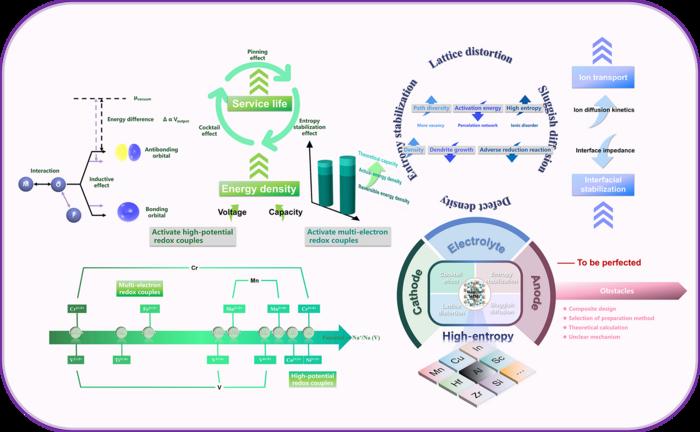High-Entropy Materials: A New Frontier for Next-Generation Batteries

High-entropy materials (HEMs) are rapidly redefining the landscape of materials science. By incorporating five or more elements into a single solid solution, these innovative materials offer unprecedented capabilities for next-generation energy storage systems.
Breaking New Ground: The NASICON Revolution
Recently, a research team led by Mengqiang Wu at the University of Electronic Science and Technology of China unveiled a comprehensive review that systematically explores NASICON-type high-entropy materials. Published in the
Journal of Advanced Ceramics on April 15, 2025, their groundbreaking work opens new pathways for developing ultra-stable, high-performance batteries.
Read the original news release here:
EurekAlert - University of Electronic Science and Technology of China Research.
What Makes High-Entropy Materials So Special?
High-entropy strategies introduce structural disorder that enhances the stability, conductivity, and energy density of battery materials. These materials:
- Activate high-potential multi-electron reactions, boosting energy storage capacity.
- Reinforce the crystal structure, increasing cycling stability and reducing degradation.
- Promote fast ion transport through multiple diffusion pathways, significantly improving ionic conductivity.
- Inhibit adverse reactions and suppress the growth of dendrites in solid-state electrolytes.
Applications in Next-Generation Batteries
The NASICON-type HEMs show remarkable advantages across cathodes, anodes, and electrolytes. By regulating lattice distortions and interface stability at the atomic scale, researchers demonstrated enhanced performance and durability, pointing to a promising future for solid-state and high-energy-density batteries.
Machine learning-assisted design and entropy-driven strategies are also playing pivotal roles in accelerating the development of these advanced materials, helping scientists predict optimal compositions and enhance their properties.
Challenges and Opportunities Ahead
Despite their promise, challenges remain — including potential phase separation and mechanical trade-offs. However, innovative synthesis techniques like ultra-fast heating and advanced doping strategies are helping mitigate these issues.
The high-entropy approach represents a transformative shift, combining chemistry, physics, and artificial intelligence to drive innovation in energy technology.
About the Researchers
Key contributors to this groundbreaking work include Youmei Li, Ming Zhang, Zixuan Fang, Mengqiang Wu, Jintian Wu, and Ziqiang Xu, hailing from top research institutions across China.
Learn More About the Journal
Journal of Advanced Ceramics is a leading open-access publication by Tsinghua University Press, boasting a 2023 Impact Factor of 18.6 — ranking it among the top journals in "Materials Science, Ceramics".
Final Thoughts
High-entropy materials are ushering in a new era of energy storage innovation. With continuous research, collaboration, and technological advancements, they could well become the cornerstone of sustainable energy systems worldwide.
💡
Enjoyed this article?
Support independent science news on Quantum Server Networks!
Your donation helps keep this platform vibrant, free, and filled with deep scientific insights.
Donate here.
🚀
Bonus for Donors: Feature your research, product, or service in a dedicated blog post promoted across major materials science communities!
📧 Email:
gabriele.mogni@qscomputing.com

Comments
Post a Comment